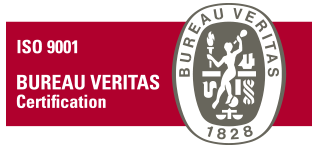5 Ways to Design 3D Printed Composite Parts Better

When it comes to 3D Printing or Additive Manufacturing some designs overlook the unique manufacturing style of 3D printers, versus say, a CNC machined part.
We work with engineers and designers who create new designs every day. They tell us how important it is to nail the design, the first time, to ensure that a 3D-printed part is up for the task.
So, to help share some of these lessons learned, we’ve compiled our top 6 tips with the help of Markforged’s composite design guide and years of experience manufacturing parts:
1. Determine loading conditions
Composite 3D printed parts are stronger on planes parallel to the print bed, especially if you are reinforcing with continuous fibre. Analyse how your part will be loaded and design the part such that the largest forces traverse the XY plane. Some parts may need to be split into multiple printed pieces to optimize for strength.


It’s important to identify the correct force orientation to avoid situations like this one.

2. Identify critical dimensions
3D printers have higher precision in planes parallel to the build plate. What are your critical dimensions or features? Critical features print optimally when in plane with the print bed.

3. Maximise bed contact
Greater surface area on the print bed minimises supports and improves bed adhesion. Which face of your part contacts the bed? Try to orient the part so that the largest face lies on the print bed unless strength or geometry needs dictate otherwise.
4. Reduce supports and improve overhangs
Fewer supports reduce printing and processing time. How can you design to minimise supports? Are the supports on your part accessible? Use angled overhangs to reduce supports and improve support removal.

5. Fillet or chamfer edges

Adding fillets ensures smooth edge transitions and reduces stress concentrations at corners. Filleting edges normal to the print bed reduces the potential for warping, while chamfering edges flush with the build plate makes part removal easier and prevents edges from splaying on the first layer. Chamfers on interface edges like holes will help line up fits more easily.
Get the design right—first time
Our additive manufacturing customers and Markforged have done the hard yards. They know what works and what doesn’t because they use the parts we manufacture every day.
Learning from their experiences, you’ve got the benefit of hindsight when designing your next 3D printed part.
Your projects will come together faster and with better outcomes, meaning you can get back to focusing on the next issues to tackle.
Want to deep dive into the composite design guide? Download for free here.


